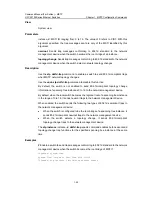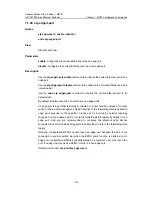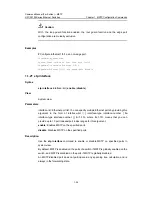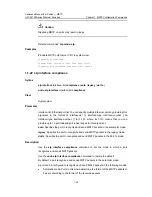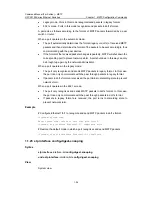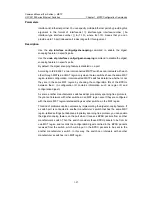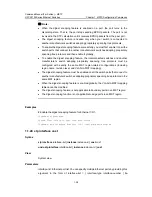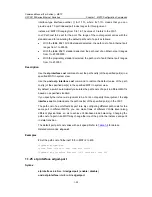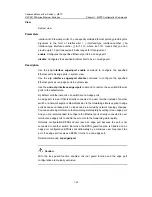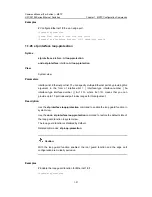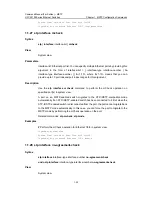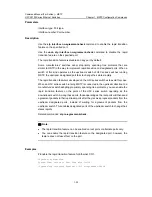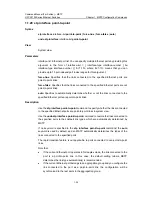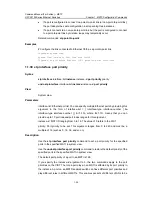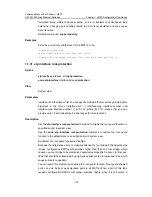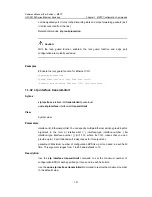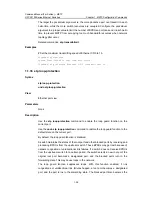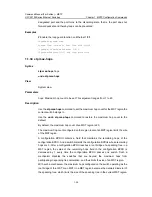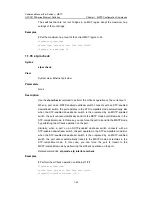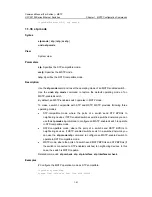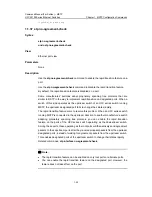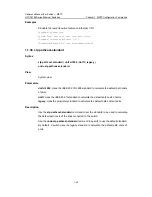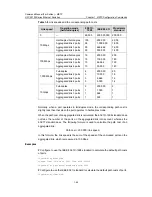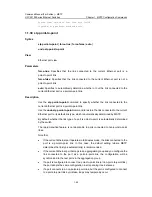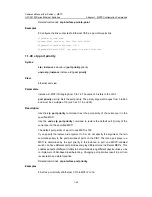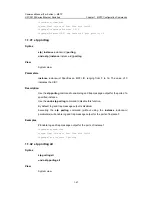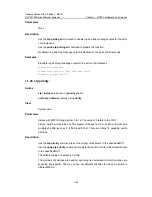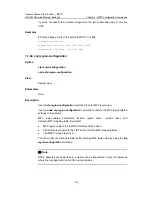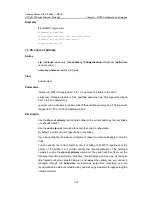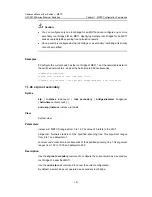
Command Manual (For Soliton) – MSTP
H3C S3100 Series Ethernet Switches
Chapter 1 MSTP Configuration Commands
1-36
forwarded along different physical paths, so as to implement VLAN-based load
balancing. Changing port priorities results in port role recalculation and may cause
state transition.
Related commands:
stp port priority
.
Examples
# Set the port priority of Ethernet 1/0/3 in MSTI 2 to 16.
<Sysname> system-view
System View: return to User View with Ctrl+Z.
[Sysname] stp interface Ethernet 1/0/3 instance 2 port priority 16
1.1.31 stp interface root-protection
Syntax
stp interface interface-list root-protection
undo stp
interface interface-list root-protection
View
System view
Parameters
interface-list
: Ethernet port list. You can specify multiple Ethernet ports by providing this
argument in the form of
interface-list =
{
interface-type interface-number
[
to
interface-type interface-number
] } &<1-10>, where &<1-10> means that you can
provide up to 10 port indexes/port index ranges for this argument.
Description
Use the
stp interface root-protection
command to enable the root guard function on
specified port(s) in system view.
Use the
undo stp interface root-protection
command to restore the root guard
function to the default state on specified port(s) in system view.
By default, the root guard function is disabled.
Because of configuration errors or malicious attacks, the root bridge in the network may
receive configuration BPDUs with priorities higher than that of a root bridge, which
causes new root bridge to be elected and network topology jitter to occur. In this case,
flows that should have traveled along high-speed links are led to low-speed links, which
causes network congestion.
You can avoid this problem by enabling the root guard function. Root-guard-enabled
ports can only be kept as designated ports in all MSTIs. When a port of this type
receives configuration BPDUs with higher priorities, that is, when it is to become a

